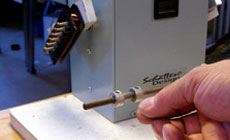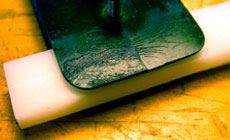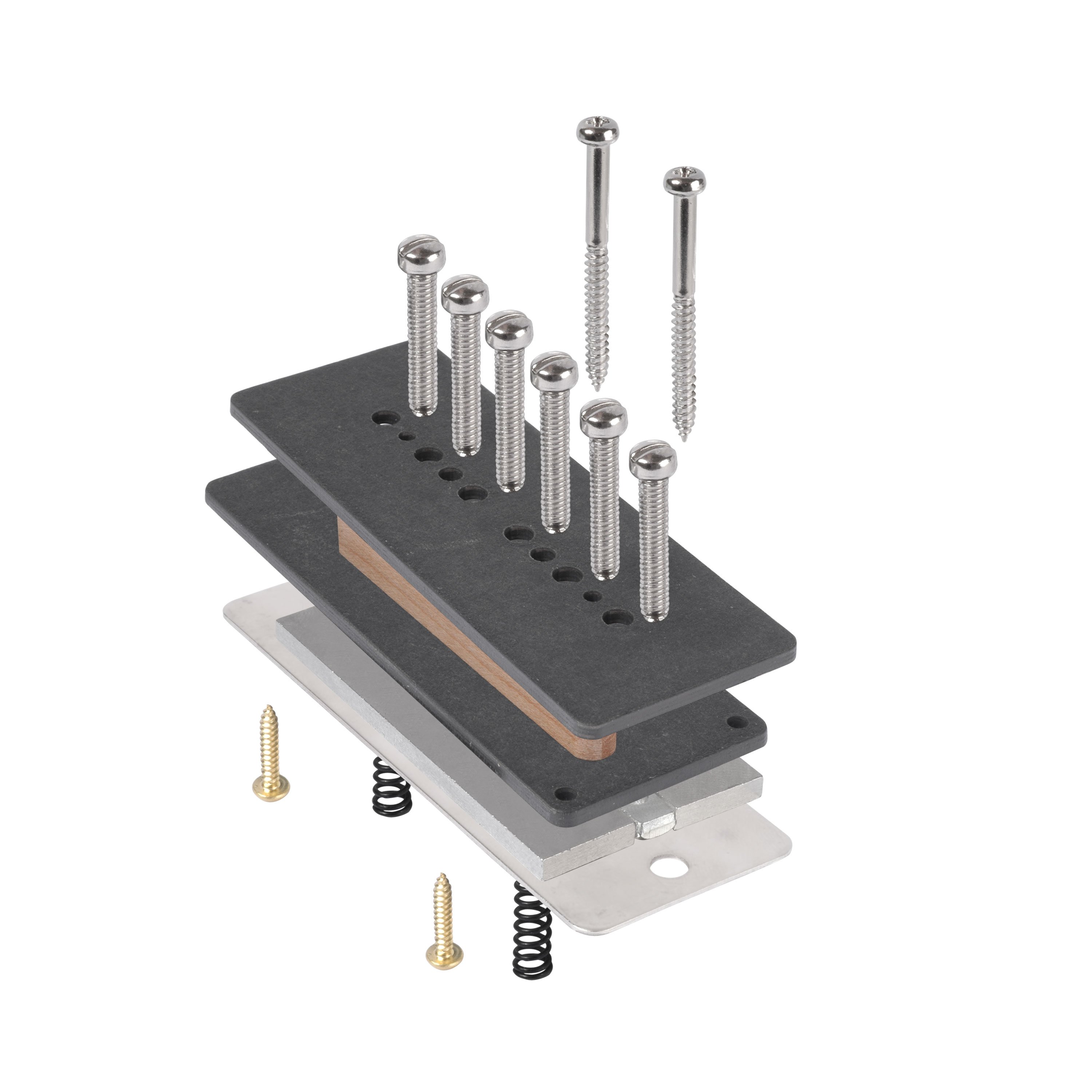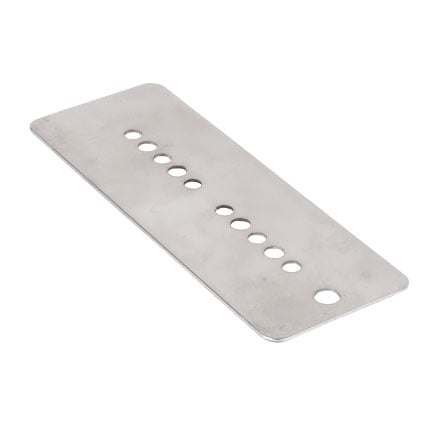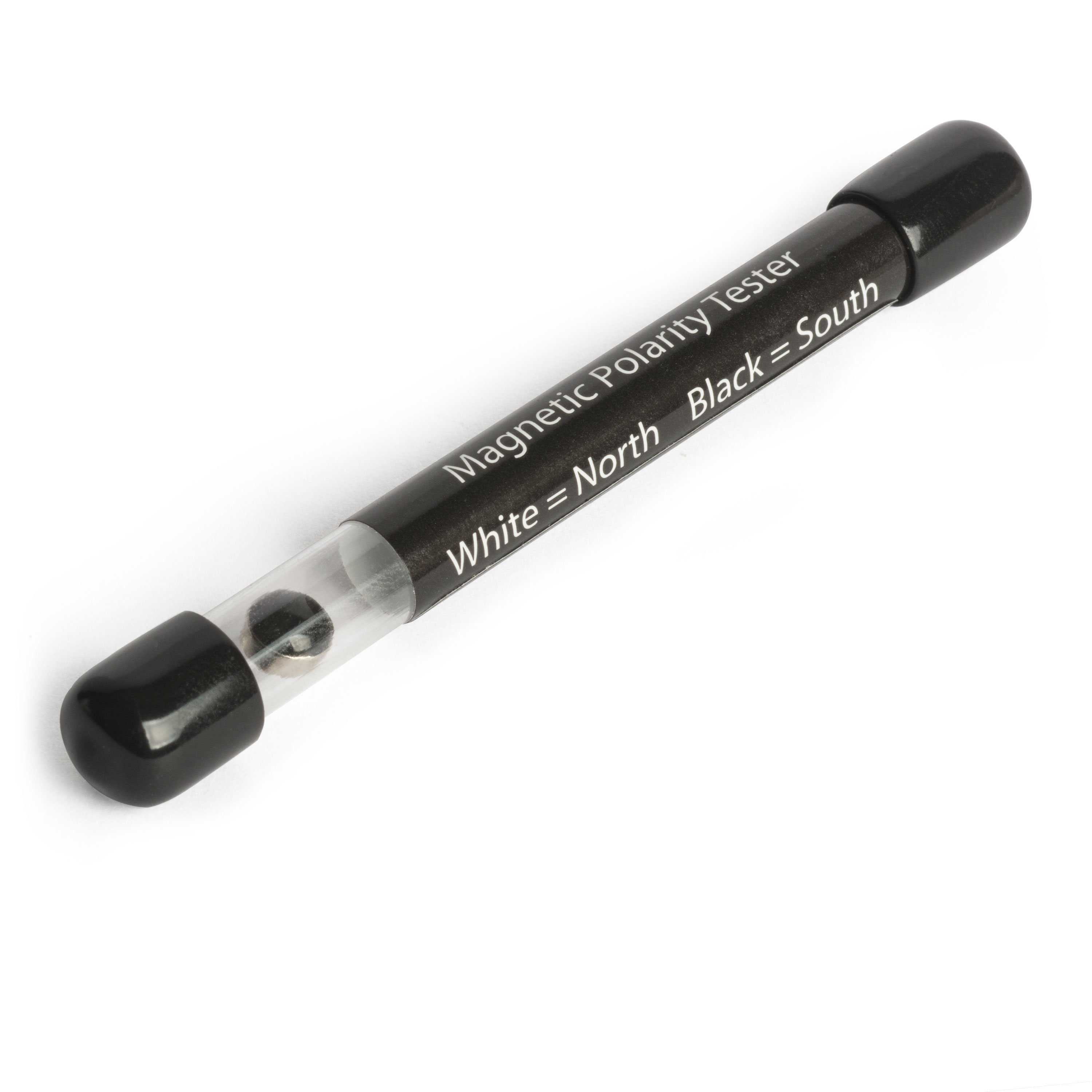Fixing (and breaking!) a 1957 Gibson P-90 pickup
Pictured above is a 1957 Gibson Les Paul Junior. Last year the original owner sold it, and one of my customers picked it up for a steal. It went cheap because the guitar wasn't making any noise when plugged in. The buyer did a little troubleshooting, and figured out that the problem had to be within the dirty old pickup itself — an original P-90 with vintage value.
He sent me these photos before disconnecting the pickup, boxing it up and shipping it to me for repair. He unsoldered the pickup lead at the volume pot (X on this drawing). I wish he hadn't chosen that spot. A better place to disconnect is where the pickup lead wires connect to the other end of that lead. That way, any resoldered joints are hidden under the old masking tape that Gibson wrapped around this joint originally. Nothing says "I've been worked on" like shiny new solder joints in the control cavity of a funky old electric guitar. I tested the pickup, and it sure was dead. So I very carefully removed the crackly old piece of masking tape that's protected the solder joint since 1957.
The solder joints looked okay, but sometimes these joints go cold so I went over them with a soldering iron to make sure. No luck, still dead. I decided to disassemble the pickup and carefully unwind it by hand to see if I can locate a break in the coil wire.
First I loosened up the polepiece screws, backing them up out of the baseplate. I unsoldered the hookup wires and removed the two bobbin mounting screws that hold the pickup together. The baseplate could now be easily removed. Before removing the magnets and keeper bar, I checked the polarity on the pickup to make sure I put it back together the same way.
Most old P-90 pickups are South up at the polepieces but occasionally you'll see one that's the opposite. This one's South up, just as you'd expect.
As I disassembled the pickup, I laid the parts on the bench in the same order and direction as they came apart. This way the pickup goes back together exactly the same way. In the event that I have to rewind this pickup, I'll try to reuse every original component except for the coil wire. With the magnets and keeper bar removed, I backed the polepiece screws out a little further -- so they were flush with the bottom of the bobbin. I didn't remove the screws entirely because these old butyrate bobbins are so delicate that the screws might not go back in without cracking the bobbin. I adjusted them out of my way. Better to be safe than sorry. I guess I jinxed myself. When I was removing the coil tape a cracked corner of the bobbin broke off with it. These things really are fragile! Now I've got to fix this, too. I carefully saved the broken piece. I'm going to reuse the old coil wrapping tape too, so I saved it by sticking it in one long straight piece along the edge of my workbench. I attached the bobbin to my pickup winder and began manually unwinding the coil, looking for trouble. After taking off about 3,000 winds, testing along the way, I still hadn't uncovered the break. This coil was almost entirely unspooled now, so I decided to go ahead and rewind the pickup. Before I could rewind the coil, that broken corner had to be repaired. A teflon shim and thin super glue made for a clean and easy fix. Now I was ready to wind. I wound the coil counterclockwise using AWG 42 enamel coil wire. (Look for this vintage style enameled wire as a new product at StewMac soon.) Most vintage P-90s had around 10,000 winds, give or take a few hundred here and there. When I hit 10,000 on the counter, I could still see quite a bit of room left before the winds would meet the mark left by the the old tape (white arrow).
I kept winding until the coil came almost to that tape line, resulting in 10,666 winds and a reading of 8.7K on the multimeter. I reassembled the pickup using the original hookup and lead wires as well as the coil tape. I even reused the crusty old piece of masking tape that insulates the solder joints. This pickup looks as old as ever, but it's back in business and ready for action.
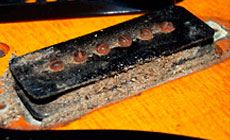
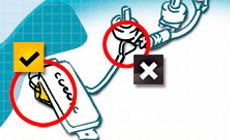

Okay, I'm goin' in...



Careful, careful...
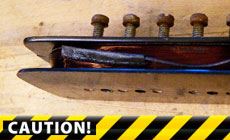
Ouch!

